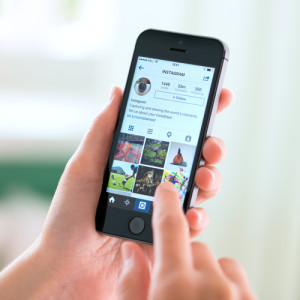As mobile growth continues to surge, columnist Aaron Strout highlights the key stats to consider when planning your mobile marketing strategy.

At least once a year, I like to step back from the mobile industry to provide some context as to what is happening and, more importantly, why it’s happening. It’s also important to know what these statistics mean to marketers.
As a marketer myself, I find that having additional context about the landscape can be helpful. To that end, let’s look at the bigger picture, starting with our global population. There are currently 7.3 billion people on the planet Earth. Of those, over 40 percent, or just over 3.4 billion, are online. What’s astounding is that fact that in 1995, less than one percent of the world had internet connectivity.
The mobile web is exploding
As fast as the internet has grown, the mobile web has expanded exponentially faster. In 2007, mobile users numbered around 400 million versus 1.1 billion desktop users worldwide, according to comScore. In 2016, there will be north of 2 billion mobile users, IDC estimates.
For those following along at home, that is 400-percent growth in just under a 10-year period. And going forward, nearly all new internet usage growth is expected to come from mobile.
While it is important to focus on the mobile channel given its rapid adoption, it’s equally important to remember that there are still billions of desktop and laptop users, and with such devices, speed, size and memory can play different roles in users’ experiences. I covered this in a recent post that stressed the benefits for marketers of optimizing both channels for their customers.
Related to that last point, there is a third device — the tablet — that gets lumped into the “mobile” category. And while it is true that tablets are technically “mobile devices” and do act and operate differently from desktops, the functionality they provide is almost equally different from that of the smartphone. I mention this because most mobile statistics bundle smartphone and tablet usage into the same “mobile” bucket, which can sometimes lead us to less factual conclusions than if the two were broken out.
Media consumption is moving to mobile
Speaking of tablets, another interesting data set that marketers should make note of is how users are engaging with different channels. As you can see in eMarketer’s chart below, average time by user by channel is following the trends you would expect — i.e., digital and mobile usage are increasing and television, radio and print are diminishing.

In looking at this data, it became clear that while people are watching and listening to less content on their physical televisions and radios, consumption of video and audio content isn’t going away, but it is migrating over to mobile platforms.
Audio consumption is on the rise
More interesting — and I’d like to think this phenomenon has been jump-started by the award-winning podcast, “Serial” — net radio usage across radio and mobile is projected to increase an aggregate one hour and 50 minutes a day (2011) to two hours and 16 minutes (2017).
In the spirit of being prescriptive, this increase in consumption of audio content tells me two things: First, that it’s critical to consider creating more content that users can listen to. (Mobile/digital should be easier here because brands can create their own content and stream it from their owned or social sites.)
The second is — and I almost can’t believe I’m saying this — marketers should take a longer look at advertising in this channel. Podcasts like “Serial” and streaming media like Pandora allow for sponsorships (“Serial”) and advertising in the free version of the app (Pandora). In the latter case, marketers can be hyper-targeted both by geography and by demographics, which is always a plus.
Social is king on mobile
ComScore’s recent ranking of top US smartphone apps, which has Facebook (77.7 percent) and Facebook Messenger (61.7 percent) listed as the top two used apps by a wide margin, reinforces the fact that social is king on mobile.
What this means for marketers is two things: 1) It is critical to continue to rally around the PESO media planning model (paid, earned, shared and owned) to create “surround sound” experiences for customers; and 2) If marketers aren’t focused on paid social to drive share of voice, consideration and ultimately purchase, they are missing the boat.
Users crave visual content
An additional note which may come as less of a surprise: Visual content continues to be queen. With the YouTube app appearing on 59.4 percent of all smartphones (with native mobile web usage probably bringing that number to closer to 85 to 90 percent) and Instagram (38.4 percent) and Pinterest (25 percent) bringing up the rear in ComScore’s top 15, it would be foolish not to exploit these channels.
Two mobile operating systems dominate
Also included in ComScore’s ranking of top smartphone apps is the latest breakdown of mobile operating systems by channel. This breakdown shows that Google’s Android continues to dominate, with 52.7 percent of the market. Apple’s iOS is the other dominant player, with 43.9 percent. Microsoft (2.5 percent) and BlackBerry (0.8 percent) are closer to needing life support at this point and can largely be ignored when it comes to mobile web/app development, save for those targeted toward financial services or other large corporate audiences.
The good news here is that with only two dominant platforms to focus on, there should be fewer concerns when it comes to supporting app testing and user experience.
The majority of email opens are on mobile
While in most marketers’ minds, email is its own separate channel, it’s worth noting that more than 50 percent of emails (54 percent, to be exact) are opened on a mobile device, according to email service provider Litmus. This is critical because, as most of you have probably witnessed, the way an email renders on a mobile device is radically different from the way it renders on a desktop or laptop.
And while most email service providers encourage clients to develop emails optimized for both platforms, they don’t always heed this advice when it comes to ad hoc emails for announcements or events.
Mobile is the fastest-growing ad format
Last but not least, I want to take a look at mobile advertising. As the fastest-growing segment of advertising (30 percent of the $27.5 billion in global digital advertising pool in 2015, according to MobyAffiliates), it’s an important area to keep an eye on.
I would argue that we’ve yet to land on the winning format for the “right” mobile advertising. Most mobile advertising still feels unwanted and the experience a bit clunky.
Mobile video advertising is taking off
If there are two areas (beyond mobile social advertising) that seem to be the closest to getting it right, the first would be mobile video advertising, which accounted for close to $500 million in 2014 and should approach $4.4 billion by 2018).
In-app advertising is also hot
The second, “in-app” advertising, is expected to hit $17 billion by 2018, according to Juniper Research.
If you consider the fact that ad-blocking software on the desktop is on the rise, combined with the increased time spent on mobile, these are key areas to invest in the future.
If you’ve read this post and still aren’t satisfied, the CMO Council has assembled an impressive list of mobile statistics on its site. The one downside is that they aren’t particularly curated. But then again, I guess that’s my job.
Some opinions expressed in this article may be those of a guest author and not necessarily Marketing Land. Staff authors are listed here.
Marketing Land – Internet Marketing News, Strategies & Tips
(32)







